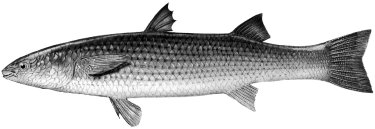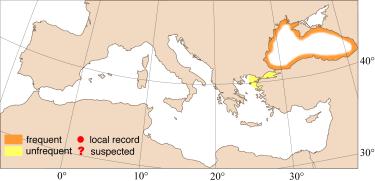
|
Relevant synonyms
Misidentification
Meristic formula
|
|
| drawing : Tuvia Kurz |
|
SHORT
DESCRIPTION
color :
back--greenish-grey to brownish. Dorsal fins darker. Belly--light grey. Anal and ventral fins have yellow touch. Iris--reddish-orange. size : common 20-30 cm (max. 61 cm)*. * Note: in the Black Sea, exceptionally large specimens have been caught (up to 10 kg). |
DISTINGUISHING CHARACTERISTICS
BIOLOGY / ECOLOGY
habitat :
mainly coastal waters and estuaries. |
|
1st
MEDITERRANEAN RECORD
|

|
|
DISTRIBUTION
|
ESTABLISHMENT SUCCESS
speculated reasons for success :
|
|
|
MODE OF
INTRODUCTION |
IMPORTANCE TO
HUMANS |
|
KEY
REFERENCES
|
 Mugil so-iuy
Mugil so-iuy